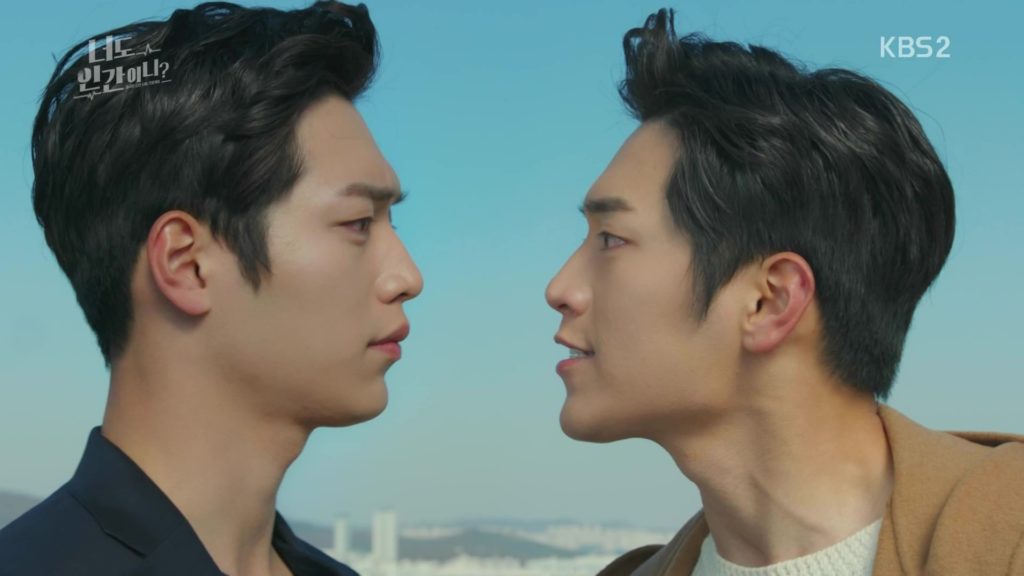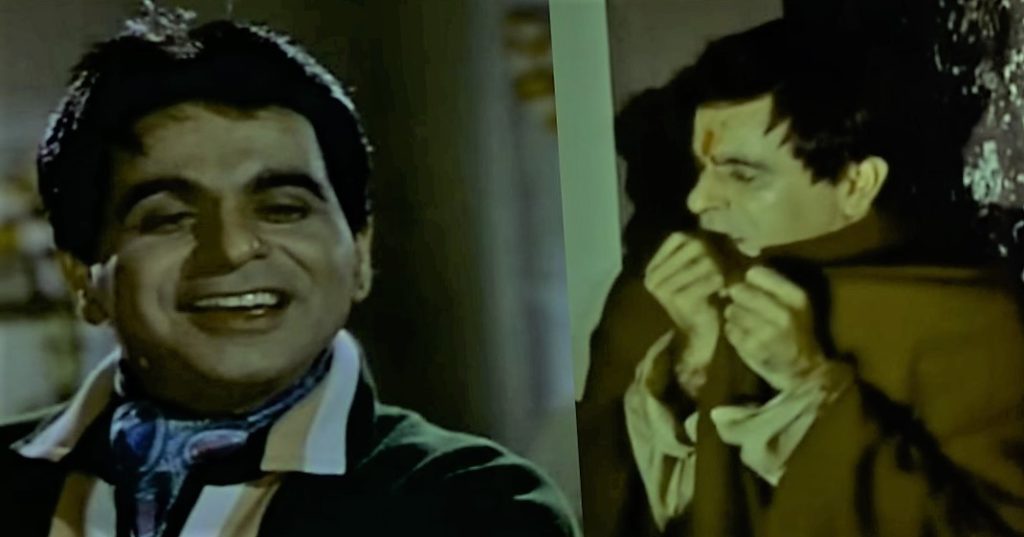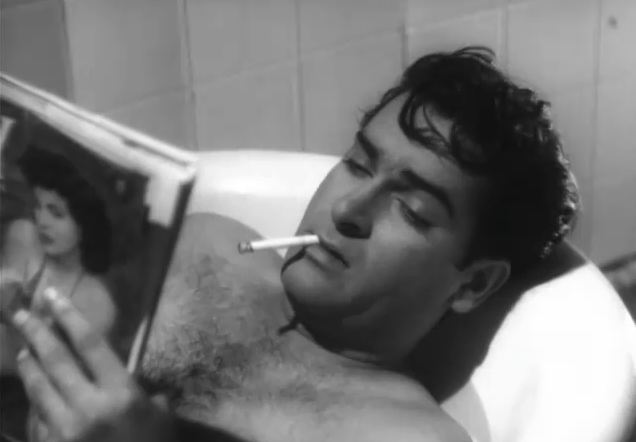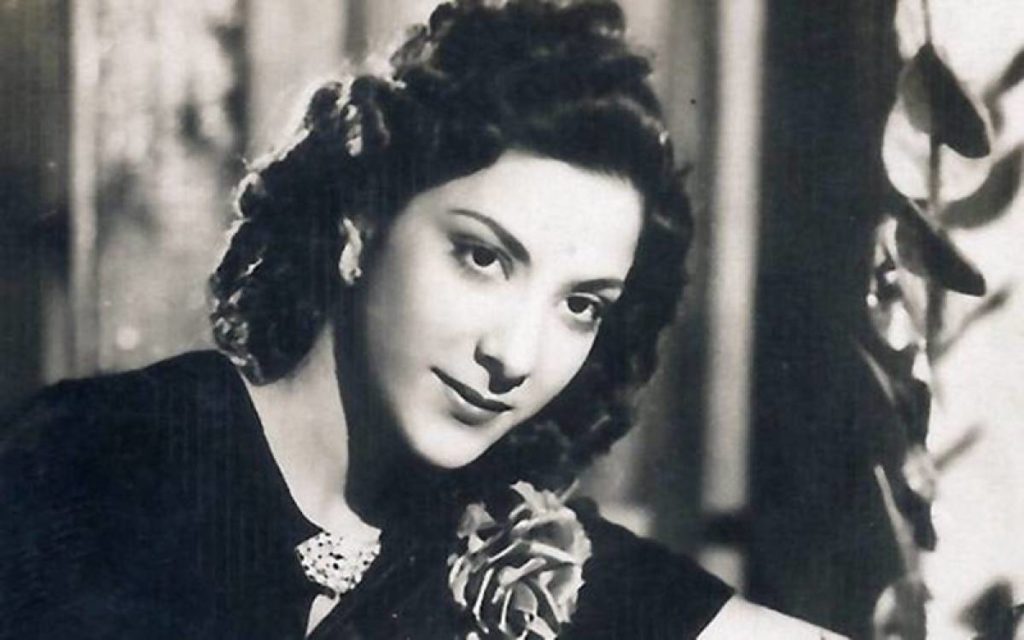Ten of my best double-role films

By Madhulika Liddle
Some of you may know that besides being devoted to old cinema, I also watch a lot of modern Korean dramas. My love for K-dramas probably has something to do with the fact that the average Korean TV show has more than a passing resemblance to classic Hindi cinema, from star-crossed lovers (with one usually very wealthy, the other poor), to disapproving parents whom one cannot dishonour by rebelling, to hate-turned-to-love, and so on. They’re addictive, and though I don’t get the time to watch much Korean drama, I have enjoyed pretty much all I’ve seen so far.
The last K-drama I watched was the 2018 show, Are You Human? In this one, a brilliant robotics engineer is forced to leave the country after her husband (supposedly) commits suicide and their little son, Nam Shin, is taken away by her tyrannical father-in-law, who’s a very wealthy and powerful chaebol. The engineer, missing Nam Shin desperately, creates a marvel of AI, a robot designed to be exactly like her son. Twenty years pass, and Nam Shin, now grown up, is nearly killed in an attempted murder and goes into coma. To stop his company (he’s on the verge of inheriting his grandfather’s business empire) from sliding into the hands of baddies, his mother, along with a couple of friends, gets the robot to impersonate Nam Shin.
While the story was entertaining enough, what really struck me about Are You Human? was the acting of the male lead, Seo Kang Joon. The human Nam Shin is an abrasive, arrogant man who hides pain and trauma behind a façade of swagger and brusqueness. The robot Nam Shin is completely different: guileless, innocent, emotionless but with the rule to help humans hardwired into him. Two diametrically different personalities, and Seo Kang Joon played them brilliantly. It wasn’t as if these two characters looked different—they were identical—but Seo Kang Joon, just through body language and expressions (his eyes!), was able to show the difference between them even without dialogue. Brilliant.

- Ram Aur Shyam (1967): Dilip Kumar as Ram and Shyam. It’s a shame that one of the greatest actors in Hindi cinema ended up playing only one double role. When I see him in Ram aur Shyam, I can’t help but wish he’d done many more. As the cocky, self-confident Shyam, who won’t let anything come in the way of his sense of justice, and as his long-lost twin brother Ram, who’s the very antithesis of Shyam—cringing, helpless, almost contemptible in his pitiableness—Dilip Kumar is not just hugely entertaining, he’s also showcasing his skills as an actor.

2. China Town (1962): Shammi Kapoor as Mike and Shekhar. Shammi Kapoor, though immensely popular (as well as being one of my absolute favourite actors), is never considered one of the acting heavyweights of the Indian silver screen. When given the chance, and a good role (or roles), Shammi could show, however, that he was far better than most people thought him to be. In China Town, for instance. Here, he played the happy-go-lucky guitarist Shekhar, and Shekhar’s long-lost twin brother (yes, lots of those in Hindi films) Mike. Mike has grown up in Calcutta’s Chinatown, and is a hard, brutal, but suave character. Shekhar, on the other hand, is genial and cheery, even to the point of being something of a buffoon. Kapoor’s usual role was rather more the Shekhar kind, but he pulled off the Mike angle very well too. And when Shekhar ends up impersonating Mike to infiltrate a Chinatown gang, the switching between Shekhar’s own personality and his assumed personality of Mike became even more interesting.
3. Do Behne (1959): Shyama as Vasanti and Malti. Some of the finest double roles, the type which feature two very distinct and unlike-each-other characters, have sadly been reserved for men. Male actors seem to get all the meatiest double roles. But, more than a decade before Hema Malini did a brilliant turn as Seeta and Geeta, Shyama also acted the part of two sisters who are like chalk and cheese. Vasanti and Malti aren’t twins, though they look exactly the same. Vasanti is the elder sister, demure and gentle and bhajan-singing, perfect bahu material. Malti is the loud, brash, Westernized younger sister who doesn’t give a damn; she lives for herself and for her happiness. Whether that means running off with her lover and living with him, or teasing Vasanti for being so conforming. Shyama was very believable as both women: on the one hand, the quintessential ‘good’ Indian woman, on the other, a ‘wayward’ one who gets a chance to redeem herself.
4. Nishaan (1965): Sanjeev Kumar as Kiran and Baadal. Sanjeev Kumar, by the 1980s, had made a name for himself as not just an actor, but an actor, too, who was extremely versatile. And good at playing multiple roles. His double role in Angoor (1982) is arguably one of the best, and funniest, bits of acting in that genre, but even before this, in 1974, Sanjeev Kumar had acted not two, not three, but a total of nine different characters in the very offbeat Naya Din Nayi Raat.
It’s somewhat fitting, really, that his first major role was a double role. In Nishaan (which is only loosely related to the Ranjan-starrer Nishaan of 1949), Sanjeev Kumar played twin brothers who are heirs to a throne. Baadal, brought up without an inkling of his royal heritage, is rather conventional ‘hero’ material: upright, brave, a bit hot-headed, but always good. Kiran, who actually rules, is not an outright villain, but he’s not the pattern card of propriety, either: a drunk, boorish, selfish and arrogant, this is a man who is taking undue advantage of power and wealth. Even this early on in his career, Sanjeev Kumar showed just how good an actor he was.

5. Sharmeelee (1972): Raakhee as Kanchan and Kamini. Though it was released in 1972, Sharmeelee is so distinctly late 60s in feel (the music, the fashions, the still fresh-faced Shashi Kapoor, even the somewhat old-fashioned tropes that played out in the story) that I think of this film as fitting well into the 60s. This, therefore, is one entry on this list that’s technically from after 1970, but is in spirit part of an earlier era. Raakhee plays two sisters (and no, they aren’t separated at birth). Kamini is the Westernized miss: smart, bold, outgoing, the sort of girl who falls in love with an Army officer while on holiday, and has no qualms about romancing him when she finds him again. Kanchan is (as in Do Behnen) the polar opposite of her sister: the Indian sati savitri who is painfully shy and demure, to the extent of being pretty much asocial (her best friends are animals). These women, in fact, are the extremes of the two characters they embody; one too meek and docile for her own good, the other perhaps a tad too reckless and impulsive for her own good. And Raakhee plays them both perfectly.

6. Hum Dono (1961): Dev Anand as Anand and Major Manoharlal ‘Mani’ Verma. Like his contemporary Shammi Kapoor, Dev Anand was hugely popular, but never really acclaimed for his acting skills. Personally, I think he let his star status go to his head: very early on, by the time the 60s dawned, you only ever saw Dev Anand onscreen, not the characters he played. His mannerisms, that ludicrous puff of hair, the swinging arms and characteristic drawl—most times, you forgot who the character was, you only knew that this was Dev Anand playing (or often not even attempting to play) the character.
But Hum Dono was a bit of a change. For once, the mannerisms are mostly toned down, and for once, he does a credible bit of acting. As the fairly conventional but torn hero Anand, as well as the philosophical thinker, Major Verma, who thinks and loves too deeply. Anand was much like most other Hindi film heroes; Major Verma was somewhat different, a little extreme but contained enough to not end up being a caricature.
7. Apradhi Kaun (1957): Gajanan Jagirdar as Shrinath and Dinanath. In a cinema where the choicest of double roles invariably came only to the biggest stars (though in later years, other character actors as well as comedians were to play double roles too), Gajanan Jagirdar came as somewhat of a surprise in Apradhi Kaun. Jagirdar usually played the avuncular father, wise (or at least trying to be wise), dignified, well-respected.
In Apradhi Kaun, not only did he play two parts, but one of which was very different from his usual style. Dinanath, a poor, broken man, has obviously been afflicted by what looks like a paralytic stroke; his mouth droops, one eyelid droops, one arm is useless, he drags a leg, and his speech is slurred. A pathetic man, who looks and comes across as very different from his identical twin, Shrinath, who is a suave, wealthy man, very sure of himself. Besides the difference in appearance, there is a distinct difference in demeanour; Dinanath comes across as tired, worn out, inherently a gentle and humble soul; Shrinath is diametrically opposite, brusque, unscrupulous, brash. Not a nice man.
It’s a pity Gajanan Jagirdar usually ended up in such predictable roles; he was capable of so much more, as this film showed.
8. Izzat (1968): Dharmendra as Dilip and Shekhar. I remember an interview with Dharmendra in which he’d admitted that after he was passed for any awards for his roles in films like Anupama and Satyakam, he simply gave up trying to act. Which is why, I suppose, barring a few films that he made relatively early in his career, he tends to have very similar roles, undemanding ones that only need him to be himself, and no more. Sing songs, woo a pretty heroine, show occasional angst, swing a fist now and then.
But even, sometimes, in films like this, you do come across a glimpse of the thespian that is Dharmendra, the man who could act. In Izzat, he has a double role as two half-brothers. Shekhar, half-Adivasi, is quiet, studious, a man whom circumstances of birth have made a cynic. Dilip, his half-brother, on the other hand, exemplifies the privileged scion of a wealthy family: happy-go-lucky, carefree, oblivious of the trials and tribulations of the less fortunate. Izzat wasn’t a great film, but Dharmendra was able to portray two different men effectively.Anhonee (1952): Nargis as Roop and Mohini. One of Nargis’s most interesting roles is the one (or two?) she played in Raat aur Din, as the ‘good’ woman Bani, who has a split personality, which every now and then surfaces as the party-loving, flirtatious Peggy. It was a fine portrayal of a woman who is actually two very different women at the same time. That role, while I definitely did want to highlight it in this post, isn’t strictly a double role; but 15 years before Raat aur Din, Nargis acted in a double role, as half-sisters, in this film opposite Raj Kapoor.

9. Anhonee (1952): Nargis as Roop and Mohini. One of Nargis’s most interesting roles is the one (or two?) she played in Raat aur Din, as the ‘good’ woman Bani, who has a split personality, which every now and then surfaces as the party-loving, flirtatious Peggy. It was a fine portrayal of a woman who is actually two very different women at the same time. That role, while I definitely did want to highlight it in this post, isn’t strictly a double role; but 15 years before Raat aur Din, Nargis acted in a double role, as half-sisters, in this film opposite Raj Kapoor.In Anhonee, Roop is the ‘good’ sister, brought up in a wealthy household: a little snobbish and imperious to begin with, but (having been transformed by love, perhaps?) kinder, gentler later on. Always dignified, always—with her long hair, her smile that never shows all her teeth, her soft voice—the ‘oonche ghar ki ladki’. A far cry from Roop is her half-sister, the tawaif Mohini. Mohini dresses provocatively, smokes like a chimney, wears her hair short, and is brash and bold. Her eyes flash, she laughs out loud (not bothering that the gap between her teeth shows), she is hard and brassy, yet occasionally oddly vulnerable too, when you see the bitterness in her, her helplessness at having been made into what she is, through no fault of her own. Nargis played these two women very well indeed.
10. Afsana (1951): Ashok Kumar as Ratan and Chaman. To end this list, another of Hindi cinema’s greatest actors. Ashok Kumar was one of those early actors who was refreshingly real, even at a time (in the 30s, for instance) when theatrical acting was the norm. Unlike his contemporary Dilip Kumar (who, sadly, got stereotyped and ended up almost invariably in very similar tragic roles) Ashok Kumar was able to show his versatility in a very wide range of roles, assaying an array of characters.
In Afsana, for instance, he plays two twins, separated at the age of ten (at a mela, no less). Ratan, the ‘good’ twin, grows up away from family and friends, suffering from amnesia and brought up in an orphanage. Though he doesn’t know who he is, his goodness has asserted itself; he’s now a mild-mannered, very popular and upright magistrate, a man whose goodness is being taken for granted by his adulterous wife and cheating best friend.
Chaman, the ‘bad’ twin, on the other hand, is angling after Ratan’s childhood sweetheart, while carrying on an affair with another woman. He’s low enough to attempt to murder Ratan even after discovering that Ratan is his long-lost brother. Though they look different (Ratan is bearded, and wears a sherwani while Chaman is always in Western clothes, is clean-shaven, smokes, and chews paan), the difference is palpably there in their expressions: in the clear, naïve eyes of Ratan (who is innocent to the point of being somewhat stupid) and the shrewd, contemptuous look in Chaman’s. In Chaman’s sardonic smile, in Ratan’s simple, trusting one. Even when Ratan ends up pretending to be Ratan, you can’t really mistake him for his brother: this man looks different.
Which are your favourite double roles? Please share!
Madhulika Liddle, short story writer and a Bollywood buff writes and reviews for her blog: https://madhulikaliddle.com/
Short URL: https://indiandownunder.com.au/?p=17247
